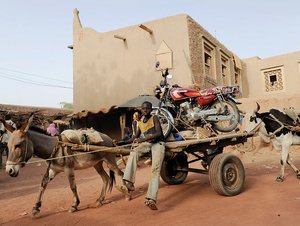Rural transformation

By 2050, two thirds of the world’s population are expected to live in cities. The United Nations New Urban Agenda implies changing diets and thus the need to include sustainable food systems for the cities. So the rural areas have to transform in parallel. Secondary cities are growing enormously in the rural areas and play a crucial role in coping with waste management or wastewater treatment and other problems that are arising. Spatial regional planning approaches have to be adjusted to take rural and urban development into account in parallel. Do rural surroundings really feed urban areas? And what about other flows such as cash in form of remittances, or the dynamics of geographical closeness which can lead to health risks? Land and resource conflicts may arise when cities are growing, and the demand for goods and services is changing production in the rural areas. Do such linkages pose an advantage or a threat?
- The myth of Africa’s ageing farmers(2020)
- Better food systems for better rural-urban linkages(2018)
- From small farms to big cities – leveraging food systems for ending hunger and malnutrition(2018)
- A missed opportunity for the dairy and meat market – A case study from Cameroon(2018)
- Push and pull relations between villages and cities from a rural perspective(2018)
- Food, nutrition and energy security in an urbanising world(2018)
- When too much closeness gets dangerous(2018)
- Achieving sustainability with a regional planning approach(2018)
- Small and medium-sized towns – an untapped potential for inclusive development?(2018)
- The two sides of rural-urban migration(2018)
- “Revitalising” China’s countryside – old wine in new bottles?(2018)
- Nigerian potatoes – a one-stop shop from farm to fork(2018)
- We need more than apps (2018)
- Structural transformation and the future of agriculture(2016)
- Making rural transformation sustainable(2016)
- The evolution of global farmland distribution(2016)
- Revamping the “Rural Worlds” model(2016)
- Rural transformation in sub-Saharan Africa(2016)
- Multi-locality – migrants shape the future of their places of origin(2016)
- Migration dynamics in sub-Saharan Africa – myths, facts and challenges(2016)
- How can mobility better benefit rural local development?(2016)
- Infrastructure for Zambia’s rural areas(2016)



